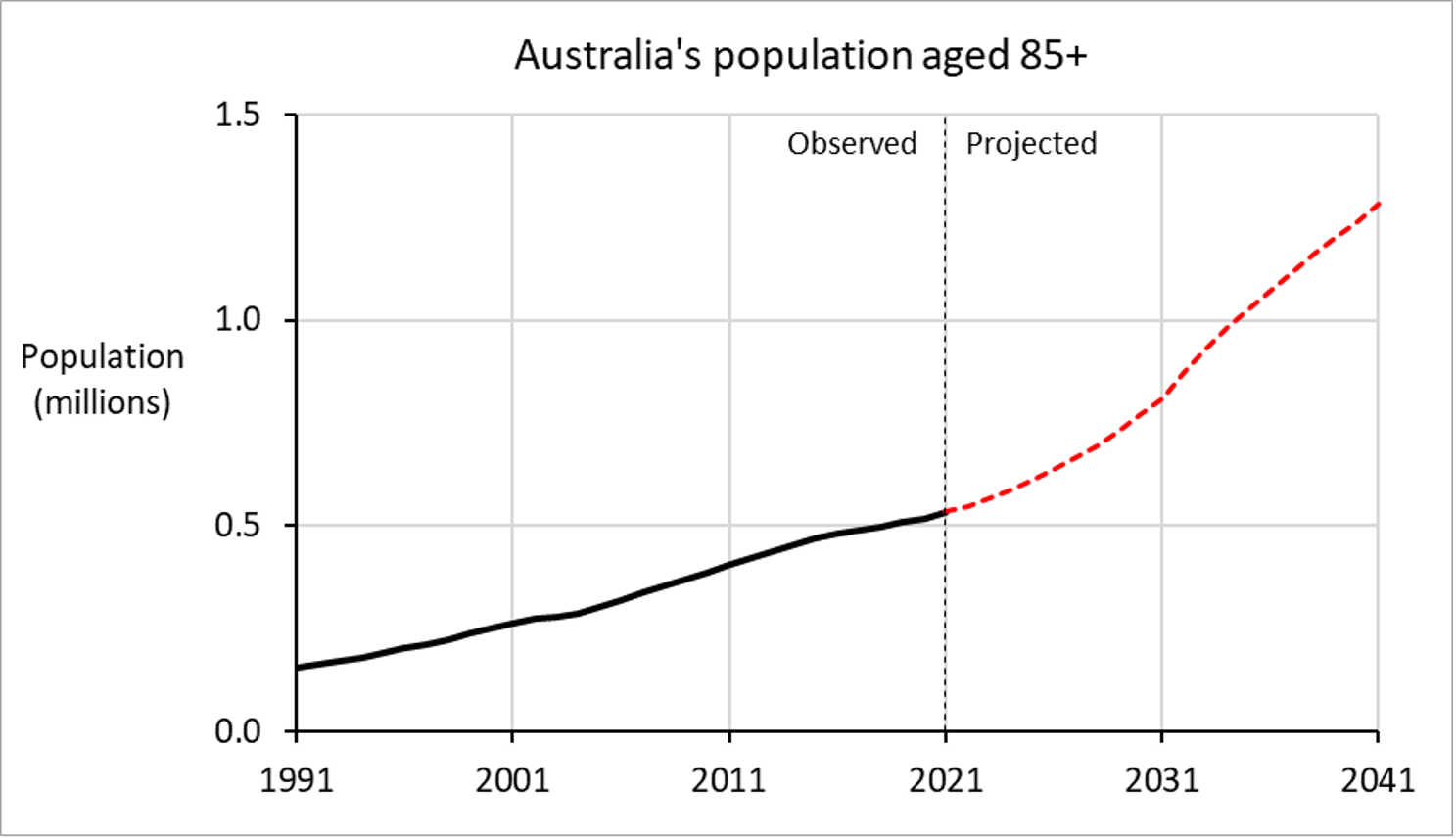
Updated projections of population ageing in Australia
Author: Tom Wilson, CEPAR Principal Research Fellow, University of Melbourne
New population projections for Australia and the states and territories prepared by CEPAR Associate Professor Jeromey Temple and me show how population ageing is expected to evolve over the next 20 years. Based on updated population estimates incorporating 2021 Census results, the projections suggest that Australia’s population aged 65 and over is expected to grow to 6.66 million by 2041, an increase of 2.35 million (or 54%) over the 2021 population of 4.31 million. In terms of population share, the population aged 65+ is projected to rise from 16.8% of the total population in 2021 to 20.8% by 2041, though the speed of ageing decelerates over the next two decades.
Greater proportional population growth is projected at the highest ages. The population aged 85 and above is projected to increase in number from 534,000 in 2021 to 1.28 million by 2041 (an increase of 747,000 or 140%), as shown in the graph below. The rapid projected increase in population shown in the graph is due to projected mortality decline and larger cohorts reaching age 85 due to past mortality declines and increasing numbers of births many decades ago; the uptick in growth from around 2031 onwards is the result of the larger baby boom generation entering the 85+ age group. The centenarian population, those aged 100 and over, will grow at an even faster rate – increasing from 5,300 in 2021 to 15,900 by 2041 (an increase of 10,600 or 200%).

Image: Population aged 85+ in Australia, 1991-2041. Source of observed data: ABS. Wilson, Temple (2022).
Among Australia’s states and territories, Tasmania is likely to remain the oldest jurisdiction, with 26.3% of its population aged 65+ by 2041, while the Northern Territory remains the youngest with only 12.3% of its population in this age group by 2041. However, the Northern Territory is projected to experience the greatest proportional increase of its 65+ population over the next two decades because its current older population is so small.
More information, along with population projection profiles of Australia and each of the states and territories, is provided in our new working paper and the projections data is available for download in the CEPAR Population Ageing Futures Data Archive here.
The Data Archive includes further previously released data sets of projections and estimates related to the composition and diversity of Australia’s older population, including for the Aboriginal and Torres Strait Islander population, Australia’s migrant, sexual minority, and regional and remote populations, as well as estimates of Australia’s ‘oldest-old’ population and how the Covid-pandemic affected population ageing in Australia. Over the coming year, we intend to release on a rolling basis further projections and estimates, including of English language proficiency, religiosity, and dementia in Australia.
